Navigation
- index
- next |
- previous |

- Home »
- The Benchmarks »
- NgLi
 NgLi¶
NgLi¶| Fopt Known | Xopt Known | Difficulty |
|---|---|---|
| Yes | Yes | Easy |
Stemming from the work of Chi-Kong Ng and Duan Li, this is a test problem generator for unconstrained optimization, but it’s fairly easy to assign bound constraints to it. The methodology is described in https://www.sciencedirect.com/science/article/pii/S0305054814001774 , while the Matlab source code can be found in http://www1.se.cuhk.edu.hk/~ckng/generator/ .
 Methodology¶
Methodology¶I don’t think I will be able to summarize the maths behind this test function generator, so I refer the reader to the paper linked in the introduction. I have used the Matlab script to generate 240 problems with dimensionality varying from 2 to 5 by outputting the generator parameters in text files, then used Python to create the objective functions based on those parameters and the benchmark methodology.
A few examples of 2D benchmark functions created with the NgLi generator can be seen in Figure 8.1.
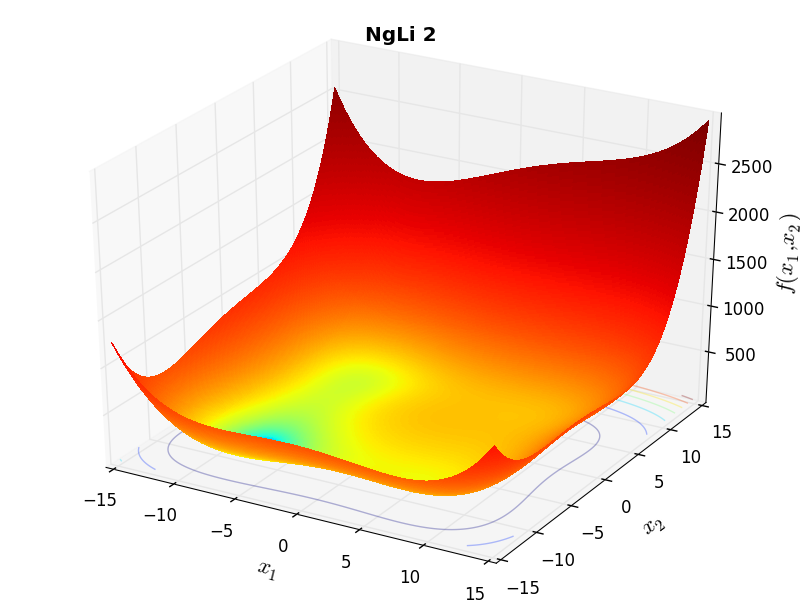
NgLi Function 2 |
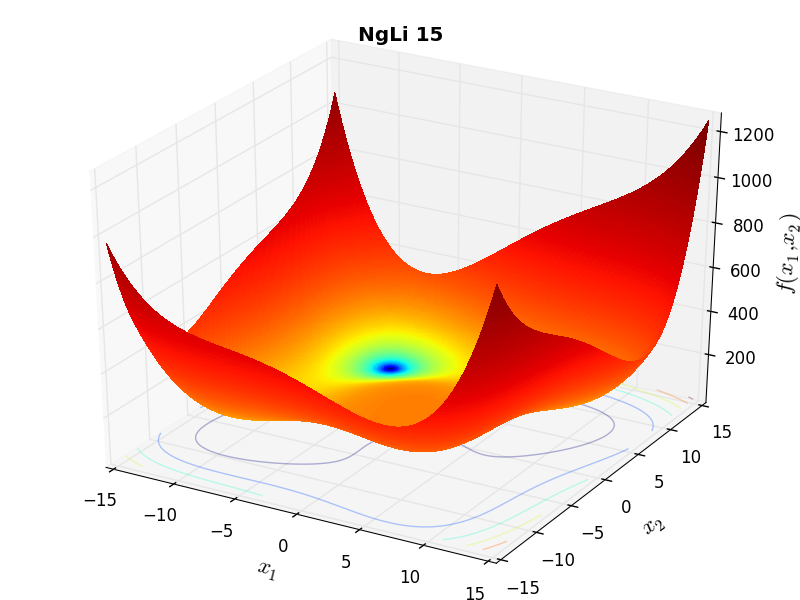
NgLi Function 15 |
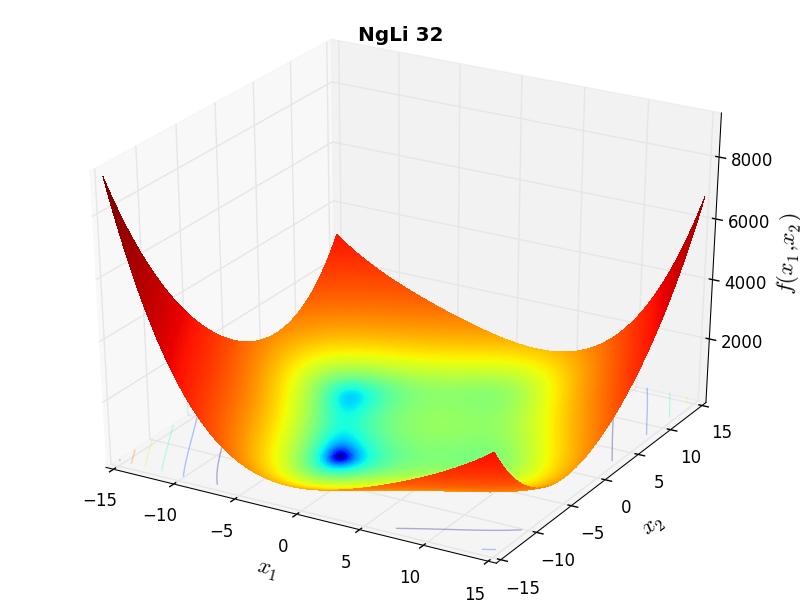
NgLi Function 32 |
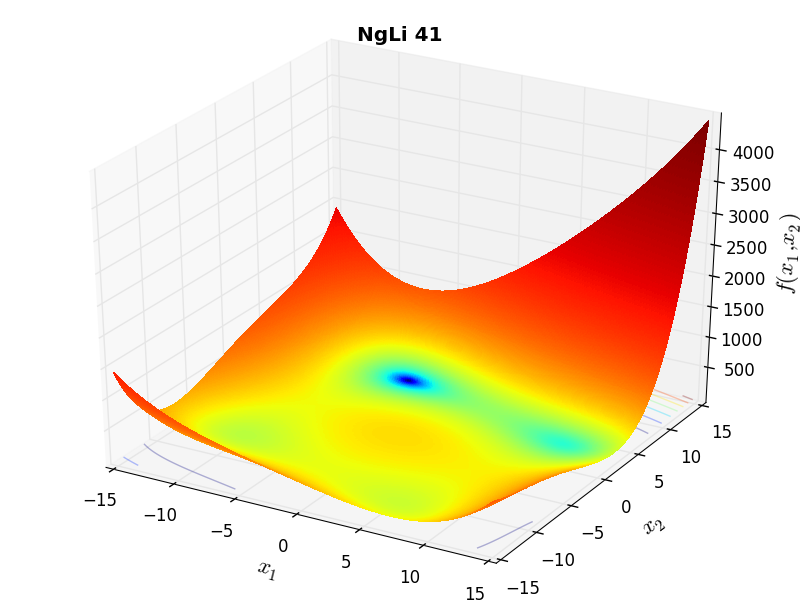
NgLi Function 41 |
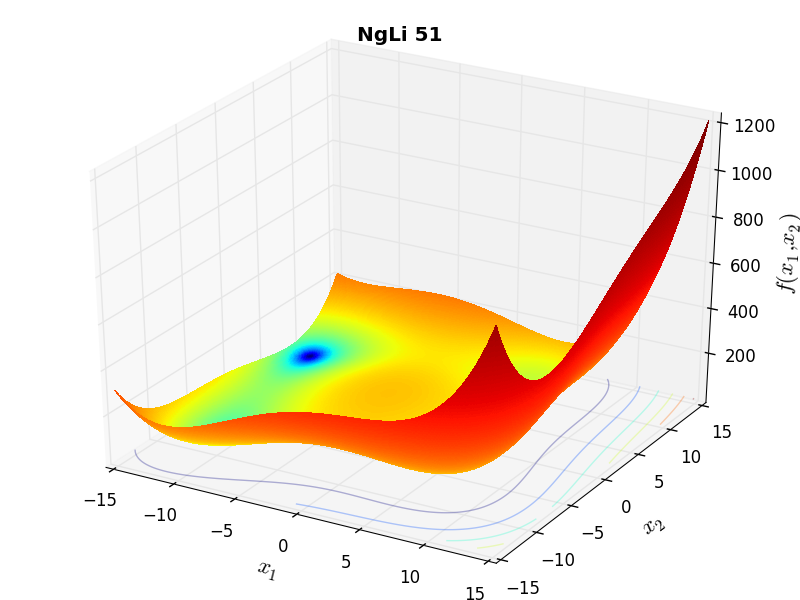
NgLi Function 51 |

NgLi Function 60 |
 General Solvers Performances¶
General Solvers Performances¶Table 8.1 below shows the overall success of all Global Optimization algorithms, considering every benchmark function,
for a maximum allowable budget of  .
.
The NgLi benchmark suite is a relatively easy test suite: the best solver for  is MCS, with a success
rate of 86.7%, closely followed by SCE and SHGO.
is MCS, with a success
rate of 86.7%, closely followed by SCE and SHGO.
Note
The reported number of functions evaluations refers to successful optimizations only.
| Optimization Method | Overall Success (%) | Functions Evaluations |
|---|---|---|
| AMPGO | 59.58% | 579 |
| BasinHopping | 32.50% | 176 |
| BiteOpt | 51.67% | 473 |
| CMA-ES | 56.25% | 762 |
| CRS2 | 61.67% | 1,206 |
| DE | 43.33% | 1,282 |
| DIRECT | 59.58% | 636 |
| DualAnnealing | 68.75% | 242 |
| LeapFrog | 42.92% | 304 |
| MCS | 86.67% | 343 |
| PSWARM | 2.50% | 1,834 |
| SCE | 77.92% | 571 |
| SHGO | 75.83% | 304 |
These results are also depicted in Figure 8.2, which shows that MCS is the better-performing optimization algorithm, followed by SCE and SHGO.
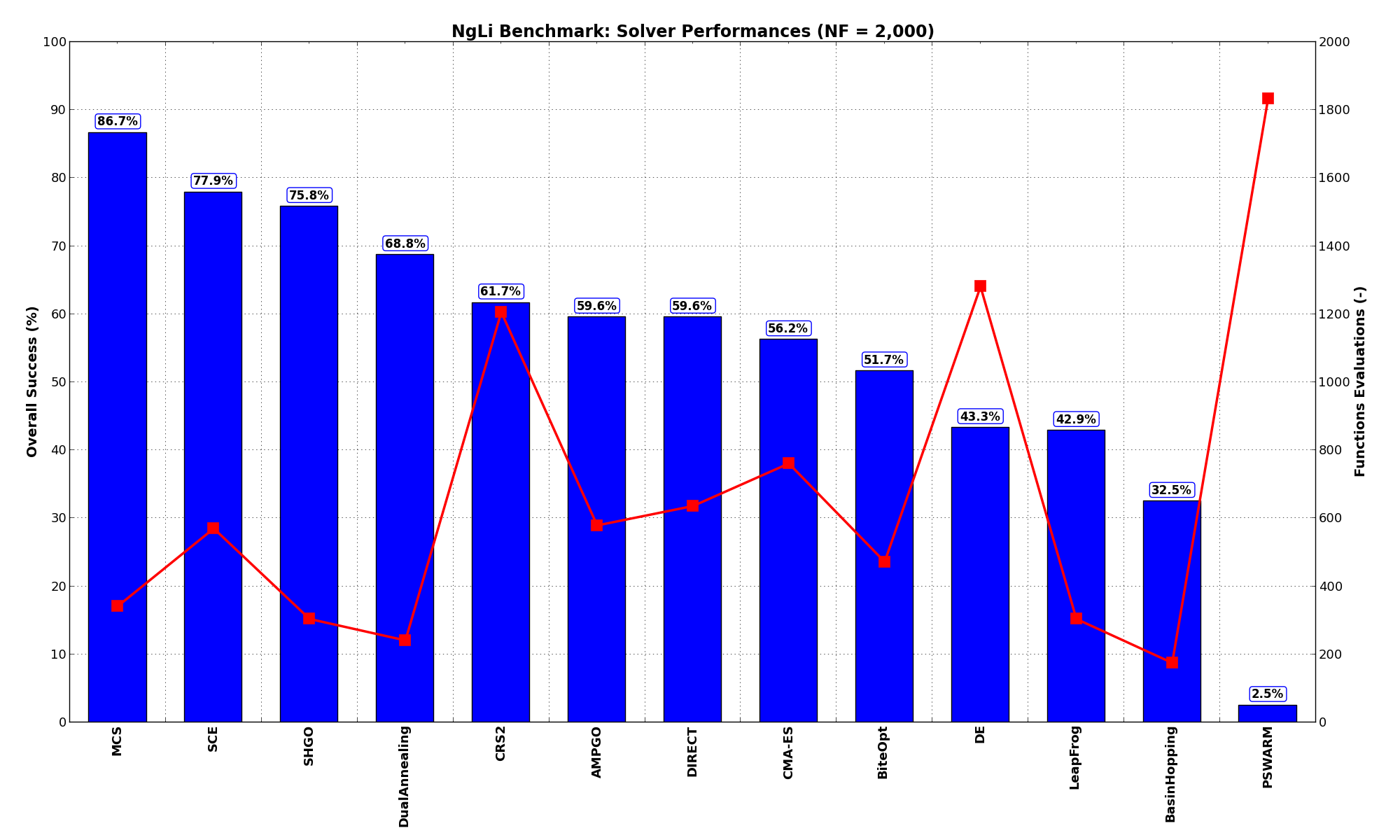
Figure 8.2: Optimization algorithms performances on the NgLi test suite at 
Pushing the available budget to a very generous  , the results show MCS basically solving the vast
majority of problems (more than 96%), followed at a distance by SHGO and DE. The results are also
shown visually in Figure 8.3.
, the results show MCS basically solving the vast
majority of problems (more than 96%), followed at a distance by SHGO and DE. The results are also
shown visually in Figure 8.3.
| Optimization Method | Overall Success (%) | Functions Evaluations |
|---|---|---|
| AMPGO | 85.42% | 1,939 |
| BasinHopping | 33.33% | 254 |
| BiteOpt | 54.58% | 682 |
| CMA-ES | 82.08% | 1,804 |
| CRS2 | 79.17% | 1,527 |
| DE | 82.50% | 2,623 |
| DIRECT | 76.25% | 1,463 |
| DualAnnealing | 72.92% | 437 |
| LeapFrog | 42.92% | 304 |
| MCS | 96.25% | 730 |
| PSWARM | 75.42% | 2,786 |
| SCE | 79.58% | 700 |
| SHGO | 84.58% | 758 |
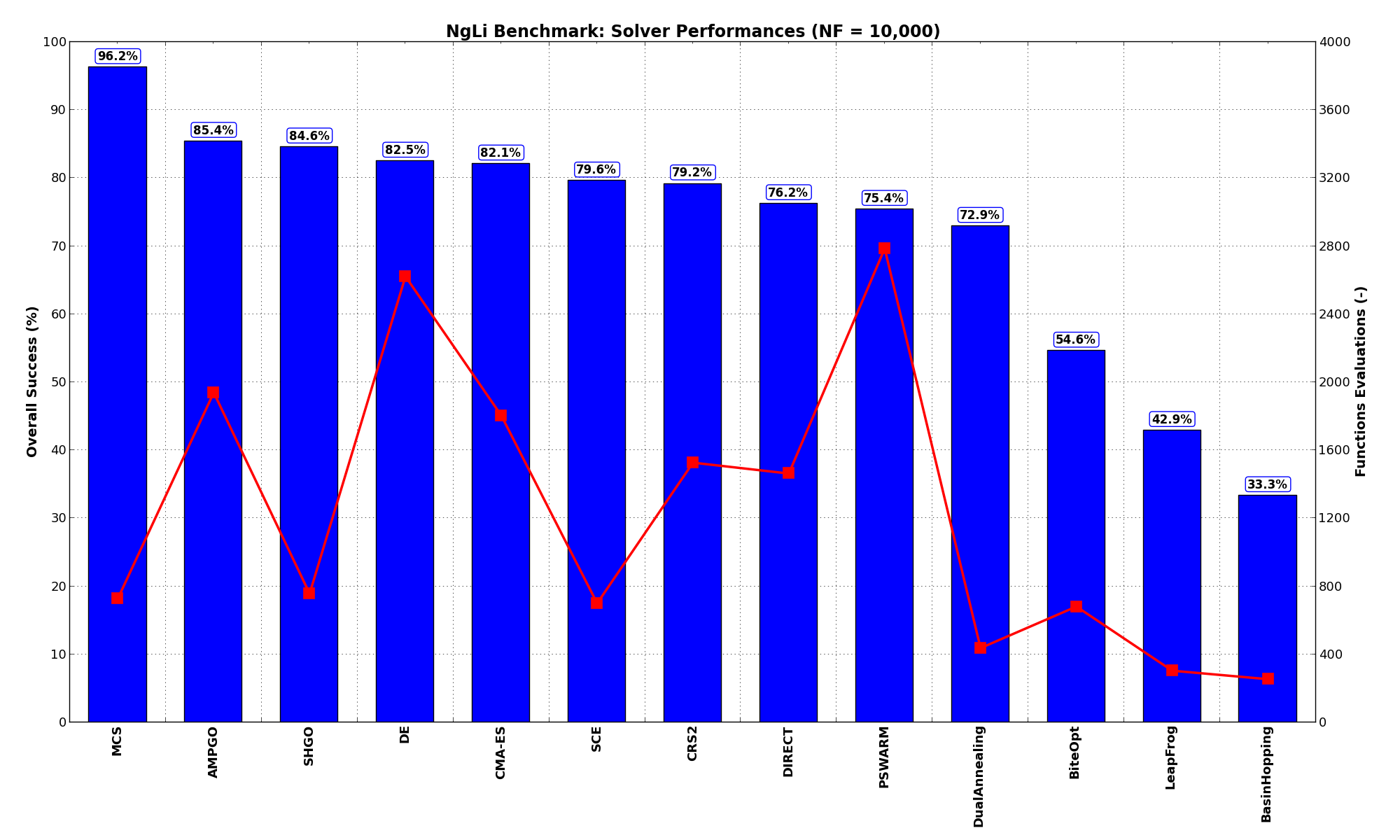
Figure 8.3: Optimization algorithms performances on the NgLi test suite at 
 Sensitivities on Functions Evaluations Budget¶
Sensitivities on Functions Evaluations Budget¶It is also interesting to analyze the success of an optimization algorithm based on the fraction (or percentage) of problems solved given a fixed number of allowed function evaluations, let’s say 100, 200, 300,... 2000, 5000, 10000.
In order to do that, we can present the results using two different types of visualizations. The first one is some sort of “small multiples” in which each solver gets an individual subplot showing the improvement in the number of solved problems as a function of the available number of function evaluations - on top of a background set of grey, semi-transparent lines showing all the other solvers performances.
This visual gives an indication of how good/bad is a solver compared to all the others as function of the budget available. Results are shown in Figure 8.4.
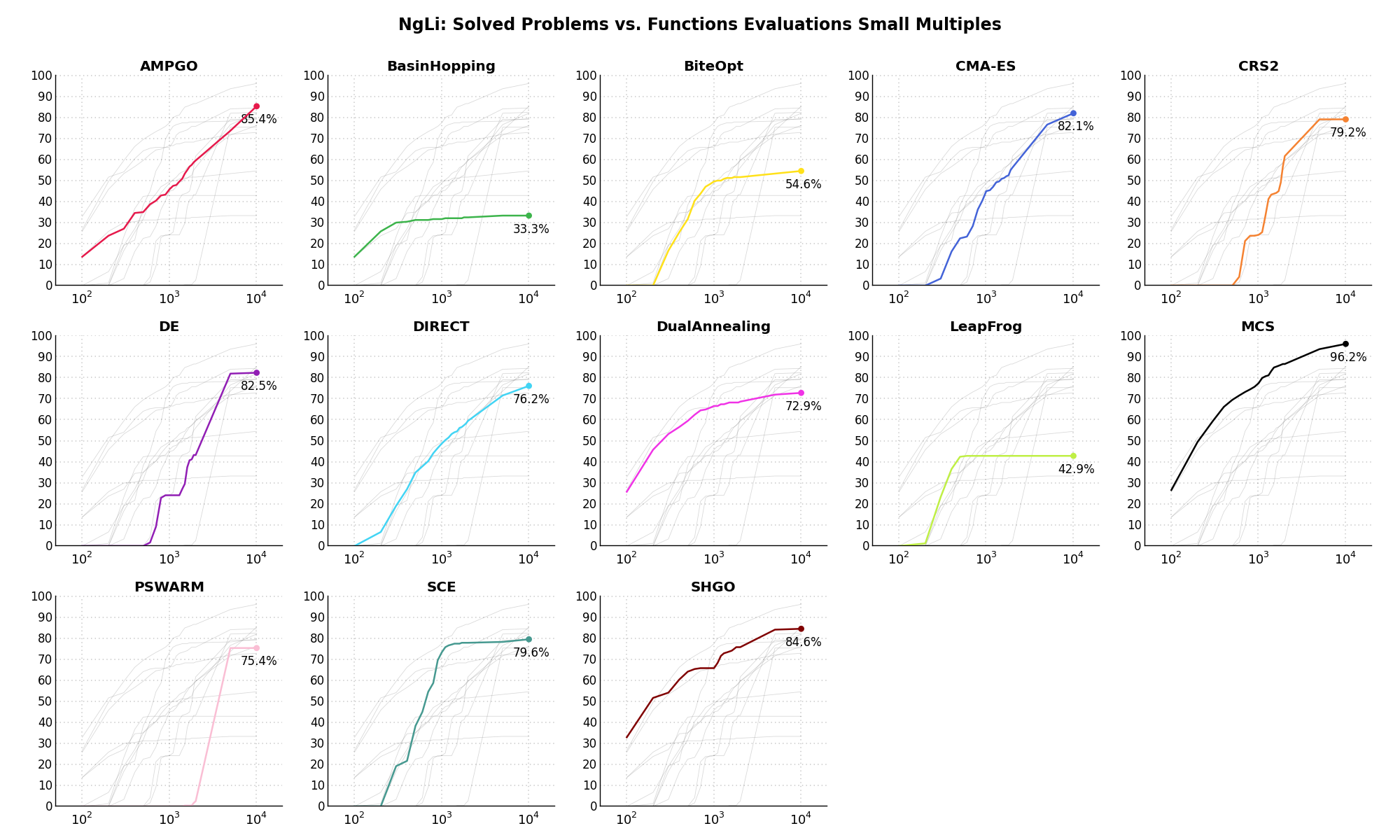
Figure 8.4: Percentage of problems solved given a fixed number of function evaluations on the NgLi test suite
The second type of visualization is sometimes referred as “Slopegraph” and there are many variants on the plot layout and appearance that we can implement. The version shown in Figure 8.5 aggregates all the solvers together, so it is easier to spot when a solver overtakes another or the overall performance of an algorithm while the available budget of function evaluations changes.
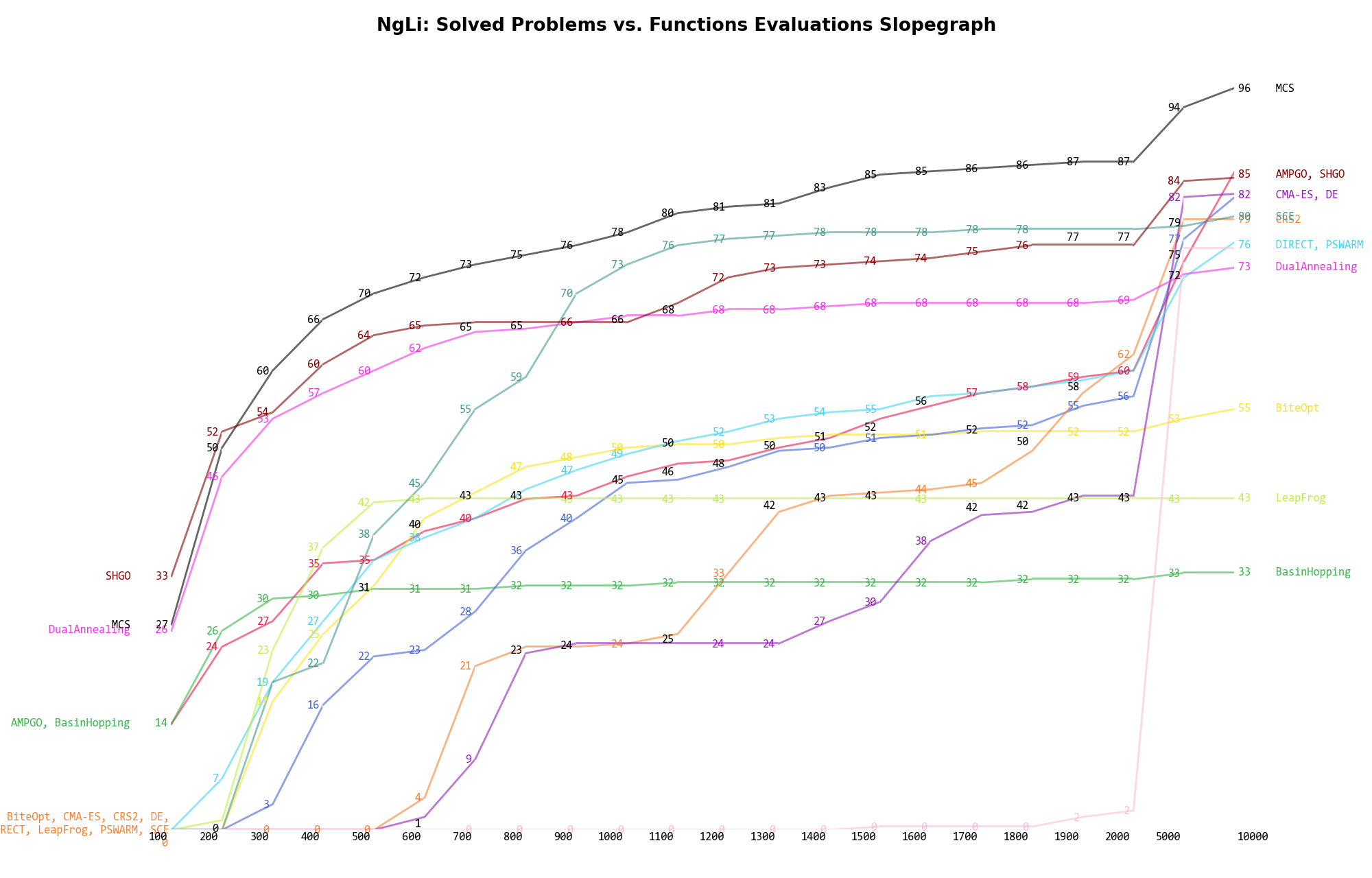
Figure 8.5: Percentage of problems solved given a fixed number of function evaluations on the NgLi test suite
A few obvious conclusions we can draw from these pictures are:
 Dimensionality Effects¶
Dimensionality Effects¶Since I used the NgLi test suite to generate test functions with dimensionality ranging from 2 to 5, it is interesting to take a look at the solvers performances as a function of the problem dimensionality. Of course, in general it is to be expected that for larger dimensions less problems are going to be solved - although it is not always necessarily so as it also depends on the function being generated. Results are shown in Table 8.3 .
| Solver | N = 2 | N = 3 | N = 4 | N = 5 | Overall |
|---|---|---|---|---|---|
| AMPGO | 100.0 | 71.7 | 50.0 | 16.7 | 59.6 |
| BasinHopping | 50.0 | 31.7 | 23.3 | 25.0 | 32.5 |
| BiteOpt | 88.3 | 53.3 | 45.0 | 20.0 | 51.7 |
| CMA-ES | 80.0 | 66.7 | 46.7 | 31.7 | 56.2 |
| CRS2 | 95.0 | 80.0 | 71.7 | 0.0 | 61.7 |
| DE | 96.7 | 76.7 | 0.0 | 0.0 | 43.3 |
| DIRECT | 100.0 | 96.7 | 36.7 | 5.0 | 59.6 |
| DualAnnealing | 100.0 | 85.0 | 51.7 | 38.3 | 68.8 |
| LeapFrog | 78.3 | 36.7 | 38.3 | 18.3 | 42.9 |
| MCS | 100.0 | 100.0 | 83.3 | 63.3 | 86.7 |
| PSWARM | 10.0 | 0.0 | 0.0 | 0.0 | 2.5 |
| SCE | 91.7 | 85.0 | 71.7 | 63.3 | 77.9 |
| SHGO | 100.0 | 100.0 | 75.0 | 28.3 | 75.8 |
Figure 8.6 shows the same results in a visual way.
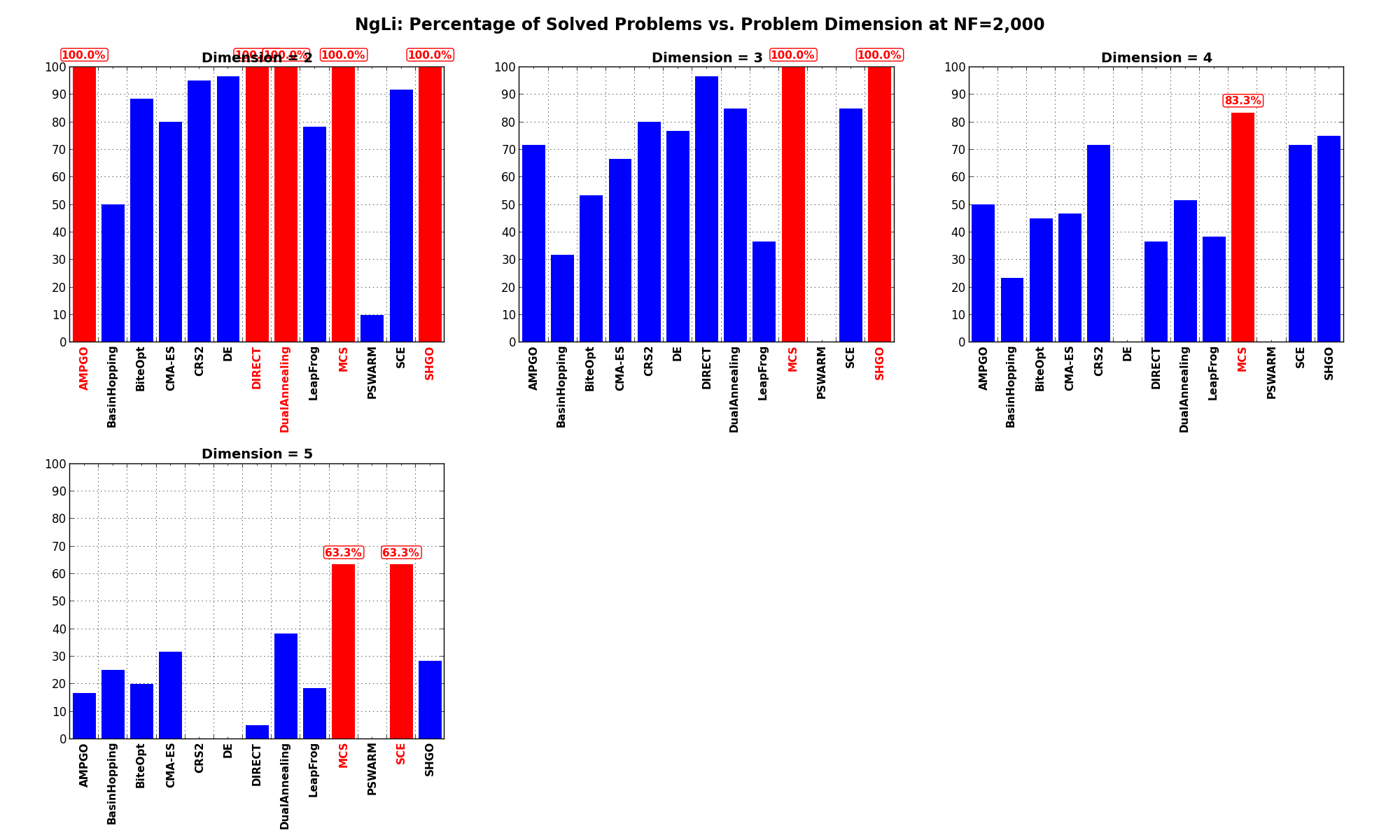
Figure 8.6: Percentage of problems solved as a function of problem dimension for the NgLi test suite at 
What we can infer from the table and the figure is that, for low dimensionality problems ( ), very many solvers
are able to solve all problems in this test suite. Increasing the dimensionality makes MCS stand out compared to
other solvers.
), very many solvers
are able to solve all problems in this test suite. Increasing the dimensionality makes MCS stand out compared to
other solvers.
Pushing the available budget to a very generous  shows a similar trend, with the obvious improvements
from CMA-ES and PSWARM.
shows a similar trend, with the obvious improvements
from CMA-ES and PSWARM.
The results for the benchmarks at  are displayed in Table 8.4 and Figure 8.7.
are displayed in Table 8.4 and Figure 8.7.
| Solver | N = 2 | N = 3 | N = 4 | N = 5 | Overall |
|---|---|---|---|---|---|
| AMPGO | 100.0 | 96.7 | 88.3 | 56.7 | 85.4 |
| BasinHopping | 50.0 | 33.3 | 23.3 | 26.7 | 33.3 |
| BiteOpt | 91.7 | 60.0 | 45.0 | 21.7 | 54.6 |
| CMA-ES | 85.0 | 76.7 | 80.0 | 86.7 | 82.1 |
| CRS2 | 95.0 | 80.0 | 78.3 | 63.3 | 79.2 |
| DE | 96.7 | 78.3 | 81.7 | 73.3 | 82.5 |
| DIRECT | 100.0 | 100.0 | 78.3 | 26.7 | 76.2 |
| DualAnnealing | 100.0 | 88.3 | 58.3 | 45.0 | 72.9 |
| LeapFrog | 78.3 | 36.7 | 38.3 | 18.3 | 42.9 |
| MCS | 100.0 | 100.0 | 98.3 | 86.7 | 96.2 |
| PSWARM | 98.3 | 81.7 | 68.3 | 53.3 | 75.4 |
| SCE | 98.3 | 85.0 | 71.7 | 63.3 | 79.6 |
| SHGO | 100.0 | 100.0 | 75.0 | 63.3 | 84.6 |

Figure 8.7: Percentage of problems solved as a function of problem dimension for the NgLi test suite at 